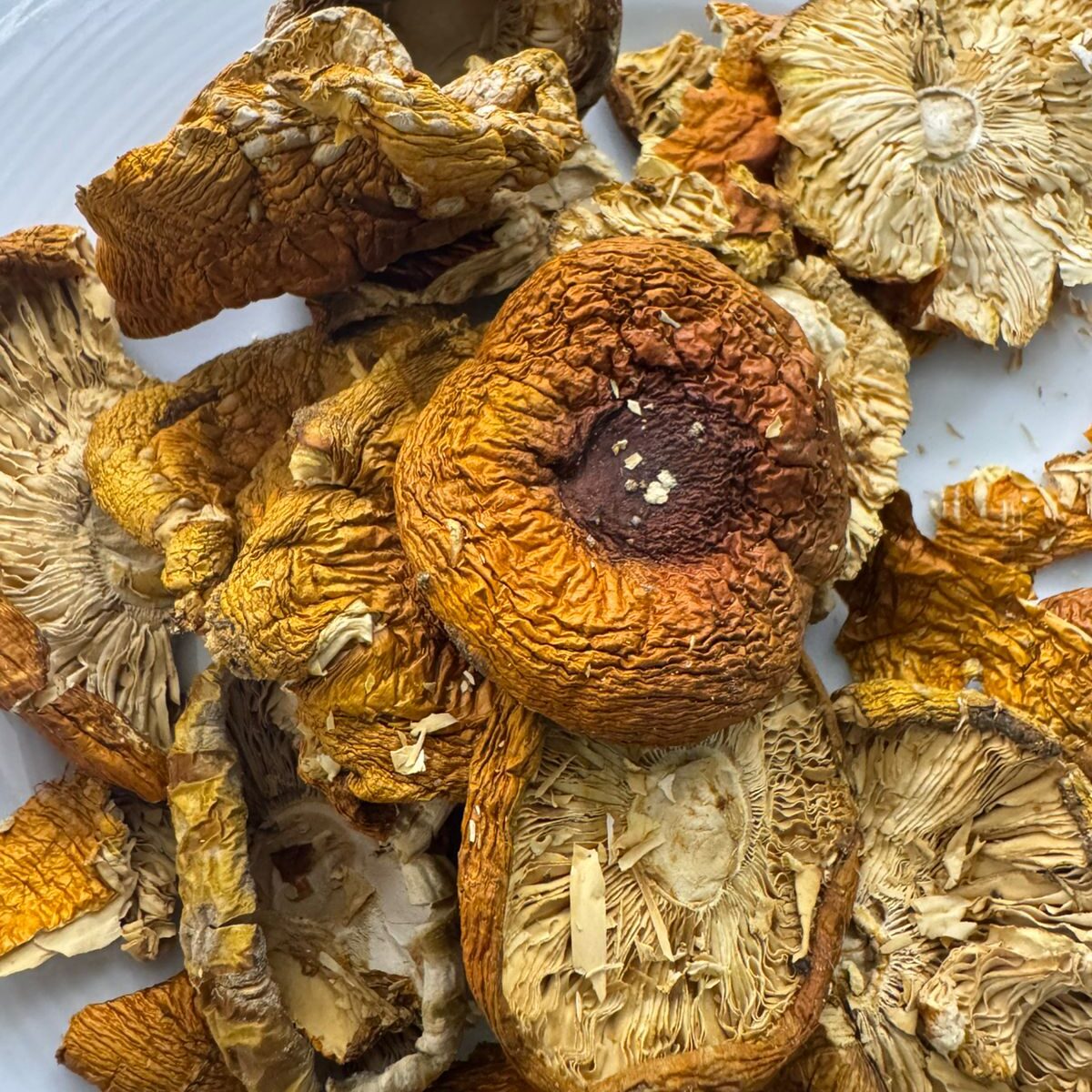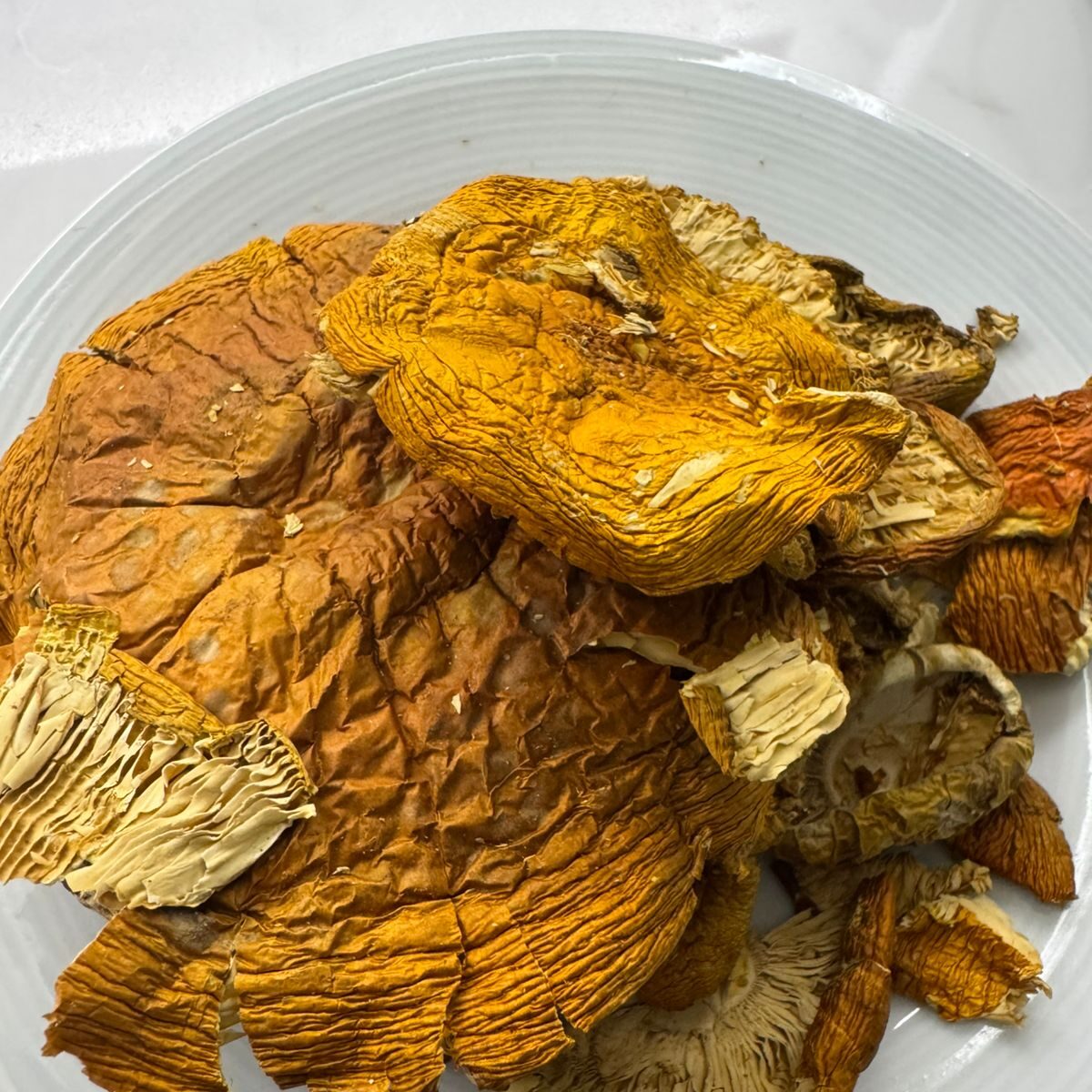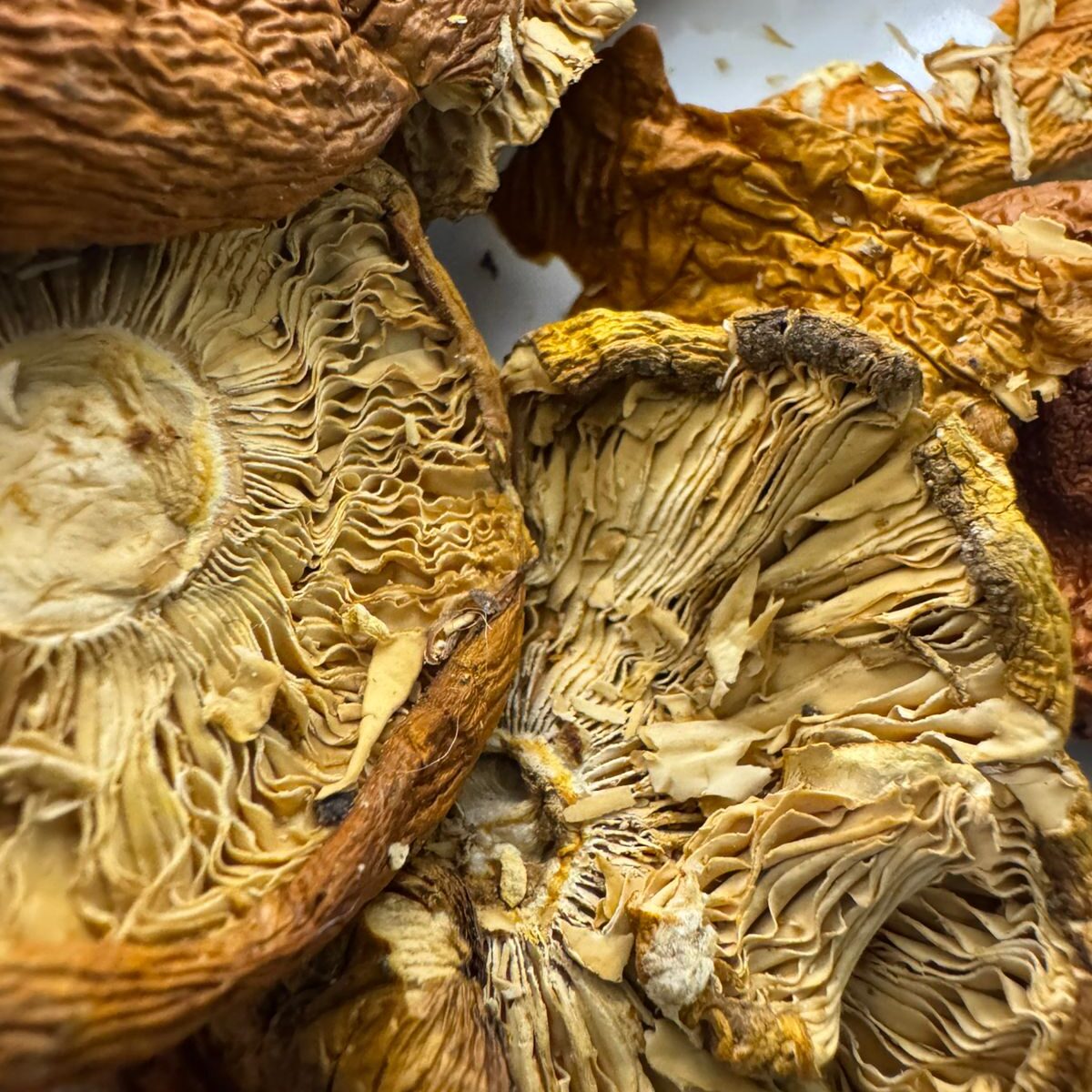
With an interesting history potentially dating back as early as the Stone Age in Siberia, the Amanita muscaria mushroom is a fascinating fungus.
The A. muscaria mushroom belongs to the basidiomycete division of fungi, one of two divisions that create the Dikarya subkingdom, commonly referred to as the “higher fungi.” This subkingdom of fungi forcibly discharges ballistospores into the air from their sterigma to reproduce. A. muscaria contains the psychoactive compounds ibotenic acid and muscimol.
The effects felt after consumption vary greatly between users, likely due to the large variances in potency between each individual mushroom. While you may not experience a ride on flying reindeer, the A. muscaria strain is still quite potent.

Benefits Of Amanita Muscaria
Mental Health Applications: Studies indicate that men primarily consume Amanita muscaria “to relieve stress, reduce the severity of depressive symptoms and reduce insomnia”, while women mainly use it “to reduce pain, as well as to reduce skin problems”.
Active Compounds: The mushroom’s primary psychoactive constituents are ibotenic acid and muscimol. Muscimol “has been shown to treat stress and anxiety, ease muscular pain and promote restorative sleep”.
Neuroprotective Potential: Research suggests potential “neuroprotective role against some neurodegenerative diseases such as Parkinson’s and Alzheimer’s, its potent role in the treatment of cerebral ischaemia”
Sleep and Pain Management: The mushroom is being studied for its potential effects on sleep disorders and chronic pain conditions, with muscimol showing particular promise in these areas.
Altered consciousness: Traditional users report experiences of altered perception, vivid dreams, and spiritual insights.
Stress relief: Some users describe feelings of relaxation and reduced anxiety in controlled settings .
Creative inspiration: Anecdotal reports suggest enhanced creativity and introspective experiences.

Conclusion on Amanita Muscaria and The Benefits
Amanita muscaria represents a fascinating intersection of traditional knowledge and emerging research into consciousness-altering compounds. The mushroom’s unique pharmacological profile, primarily through muscimol and ibotenic acid, offers distinct effects compared to other psychoactive fungi.
The reported benefits suggest several areas of potential therapeutic application. The mushroom’s ability to induce altered states of consciousness have value for introspective work, creative problem-solving, and spiritual exploration. Traditional users have consistently reported its effectiveness for promoting deep, restorative sleep and vivid dreaming, which could have applications in sleep research and therapy.
The anxiolytic properties described in traditional accounts align with growing interest in alternative approaches to stress and anxiety management. Unlike stimulating psychedelics, Amanita muscaria has more sedating, grounding effects that some users find beneficial for relaxation and mental clarity.







